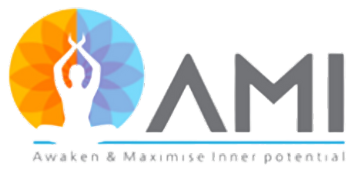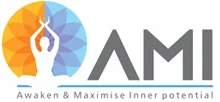
Consider these facts:
- The brain represents just 2% of your body weight, yet it uses about 20% of the body’s oxygen supply. Oxygenation plays a significant role for brain health!!
- Shrinkage of the Brain begins around the ages 30s or 40s. The shrinkage rate of your brain accelerates as you reach age 60.
- Your cerebral cortex, the wrinkled outer layer of the brain, gets thinner as you age. Thinning of the cerebral cortex is noticeable more at the frontal lobe, that processes memory, problem-solving, social interaction, and motor function. Thinning can also be noticeable in parts of the temporal lobe. This part of the brain helps people understand words, speak, read, write etc.
- When the brain ages and shrinks, there are fewer connections between neurons (brain cells), and the neurotransmitters. These systems communicate information from the brain to the different parts of the body. Even healthy older adults may experience issues like –
- Challenges with communication
- Trouble recalling words or vocabulary
- Difficulty learning something new
- Mental slowdown due to reduction in communication between brain nerve cells
- Decreased blood flow in the brain resulting in reduced brain oxygenation
- Parts of the brain that mature the last during growth phase, are the first ones to start ageing!!
Brain aging cannot be stopped. However, you can boost brain health by Neuro yoga practices. These practices can improve brain oxygenation and build brain muscle. There is growing evidence that the brain maintains the ability to change. Interestingly the brain can adapt even after 60 years. This enables people to manage new challenges and tasks despite ageing.
Neuro yoga involves the brain with a combination of muscular activity. There is an internally directed mindful focus on self-awareness, the breath, and energy.
It is a self-empowering process with the practitioner being their own healer. Yoga engages the self in the healing process. By playing an active role in their journey toward health, one’s holistic healing comes from within.
Neuro yoga practices consist of specialized asana (posture), breath control (Pranayama) and meditation (Dhyana). It has proven ability to reverse or delay brain aging by improved brain oxygenation and rejuvenation.
How does neuro yoga work:
It improves blood flow and increases levels of hemoglobin and red blood cells which allows for more:
- Oxygen to reach your body cells thus enhancing their function. Inverted poses encourage venous blood flow from the legs and pelvis back to the heart. The blood becomes freshly oxygenated through the lungs. Therefore, it improves overall functioning at the cellular level.
- Yoga enhances many of the same brain structures that also benefit from aerobic exercise, a review published in the journal Brain Plasticity found. It boosts your brain’s amygdala, which contributes to emotional regulation. Additionally, it strengthens the prefrontal cortex, which governs planning and decision-making. Neuro yoga thus works miracles on cognitive functioning.

Overview on Brain oxygenation:
- Intensive Neuro yoga practice counteracts the cellular effects of ageing, according to research from the All-India Institute of Medical Sciences. After 12 weeks, participants had less DNA damage, more BDNF (Brain Derived Neurotrophic Factor – promotes the growth of brain nerves) and more sirtuins (a group of enzymes that boost cellular health). BDNF helps control age-related brain deterioration. Also, it protects the brain cells and stimulates the growth of new nerves and nerve connection points.
- Regular practice of neuro yoga enhances proprioception (ability to walk without looking at your feet or being able touch your nose with eyes closed) and improves balance. Other research also suggests that, neuro yoga can enhance mental flexibility, task switching, and information recall among older adults. Regular practice has shown to improve and reduce age-related changes in gait among healthy elders.
- Research suggests that neuro yoga can produce an invigorating effect by enhancing brain oxygenation. Also, meditation helps increase gray matter in the brain which in turn improves, decision-making, reasoning, and self-control. Additionally, changes in the neurology of the brain is enabled. Thus, helping transition beta waves (excitatory) to the theta waves (relaxation), leading to a deeper awareness
- A new study by UCLA researchers indicates that, yoga can reduce older adults’ risk of mild cognitive impairment (e.g: memory and thinking problems). These are often considered as a precursor to Alzheimer’s and other forms of dementia. Other findings are that yoga practitioners had better memory skills, versus practitioners engaged in memory enhancement training. This is corelated with improved brain neural connectivity.
- MRI brain scans of long-term meditators had more gyrification (wrinkled surface) of the brain’s cortex. The number of years of practice is correlated with the amount of gyrification. Increase in brain gyrification allows for efficient processing by the nerves. This is attributed to better brain oxygenation.

Some yoga practices and links to videos to improve brain oxygenation and nerve connections:
Asanas (postures)
These practices can be done seated or standing. If you feel dizzy or any discomfort, stop and do normal breathing seated or lying down
- Before commencing the practices do some warmups (6-8 repetitions each) like curling and stretching toes, ankle, knee and waist rotations, elbow bends, shoulder shrugs, neck rotations etc.
- Surya Namaskar or Sun salutation brings awareness to the mind body and breath. Beginners can start with 2-3 sets and then progress to 6 sets or more. Use the link below to access the video
Link: https://learn.amiyogaglobal.com/courses/master-the-surya-namaskar/contents/60f926bb94a85
3. Bandha Hasta Utthanasan(locked hand raising pose) The practice improves blood circulation to the entire body, especially to the heart and the brain. Avoid in case of dizziness, uncontrolled hypertension, or spinal issues. Can be also done seated on a chair

Technique:
- Stand erect with the feet together and arms by the sides. Relax and balance the body weight equally on both feet.
- Cross the wrists in front of the body and with inhalation slowly raise the crossed arms above the head. Bend your head backwards and look up at the crossed wrists.
- Exhale and spread arms to the sides, forming a straight line at the shoulder level. Hold position and then cross the wrists again and raise arms upwards.
- Bring the arms down to the starting position and repeat for 4-5 rounds.
4. Uthita Lolasan: (Swinging while standing pose) It is a forward stretch pose. It removes tiredness by stimulating the circulation and toning the spinal nerves. It refreshes the brain, calms the mind and relaxes the heart. Avoid in case of back conditions, hypertension or vertigo. Can be also done seated on a chair
Technique:
- Stand erect with feet a metre apart. Inhale raise the hands keeping elbows straight. Bend the wrists forward so that the hands hang limp. Follow the same practice while seated on a chair.
- Exhale and bend forward from the hips allowing the arms and head to swing between the legs. Allow the body to swing gently and spontaneously a few times.
- To return, gently come up with arms raised and lower arms to the side. Repeat 2-3 times
5 .Shavasana (the corpse pose): This asana relaxes the whole psycho-physiological system
Technique:
Lie flat on your back with the arms about 15 cm away from the body, palms facing upward. Let your fingers curl up slightly. Keep the feet slightly apart to a comfortable position and close the eyes. The head and spine should be in a straight line. Relax the whole body and try to stop all physical movement. Become aware of the natural breath and allow it to become rhythmic and relaxed. After some time, again become aware of the body and surroundings and gently and smoothly release the posture.
Duration: A minute or two is sufficient between asana practices, do it longer if you have the time.
6. Special AMIyoga breathing practices, movement of the arms to be as slow as possible. Repeat 5 times at start and gradually increase. Practices are done seated in cross legged position on a mat or on a chair. It is an excellent practice to improve blood circulation and brain oxygenation.
6. a) Upward stretch breathing: Stretch out the arms at shoulder level, palms facing the floor. Raise arms up with deep and full inhalation and bring them down with slow and complete exhalation.
6.b) Backward stretch breathing: Stretch out arms at shoulder level palms facing each other. Inhale deeply and fully and stretch hands sideways, chest out and head back. Exhale slowly and completely and bring palms back together in front.
6.c) Lateral stretch breathing: In seated position, rest the right hand on the right side. Laterally raise the left hand up with deep and full inhalation. Bring the left hand down with slow and complete exhalation. Repeat on the opposite side.
7. Abdominal or diaphragmatic breathing: (for demo)
https://www.youtube.com/watch?v=kPk3UyItzyY
This is the most natural and efficient way to breathe. It is often forgotten due to tension, poor posture or lack of training. Abdominal breathing enables the complete and efficient usage of your lung capacity. It improves oxygenation due to better blood circulation.
8. Anulom Vilom (alternate nostril breathing), a pranayama practice which helps activate right and left brain. It is one of the best pranayama practices. The practice helps purify the different energy channels in the body. It also improves brain oxygenation.
Anulom Vilom induces tranquility, clarity of thought and concentration. It is recommended for those engaged in mental work. Avoid the practice if you have colds, flu or fever.

Technique:
- Sit comfortably on a mat or on a chair with your back straight.
- Close the right nostril with the right thumb and breathe in from the left nostril. Close both the nostrils and hold breath. Next, close the left nostril with the ring finger of the right hand and breathe out from the right nostril.
- Breathe in deeply from the right nostril, close both nostrils, hold breath. Then, close the right nostril and breathe out deeply from the left. This is one round. Practice 5 to 10 rounds for a start.
- The time for inhalation and exhalation should initially be equal. And, with practice the time for exhalation can be longer than inhalation. Breathing must be slow, controlled and relaxed.
Anulom Vilom can be combined with the 4 lines of Gayatri Mantra to further enhance its effects. By coordinating with inhale /hold/ exhale/ hold respectively. Use the link below for a demo. Stress Management Workshop (amiyogaglobal.com)
9. Bhastrika (the bellows breath): This Pranayama increases the exchange of oxygen and carbon dioxide into and out of the bloodstream, respectively. It balances and strengthens the nervous system. To be avoided in case you have hypertension, eye diseases, stroke or cardiac issues
Technique:
- Sit in any meditative pose with head and spine up straight, hands resting on the knees.
- Take a deep breath in and breathe out forcefully through the nose and then breathe in with the same force. Forceful inhalation results from fully expanding the abdominal muscles. And, the forceful exhalation results from contraction of the abdominal muscles. Force of inhalation and exhalation must be equal.
- Start with 5 rounds and extend gradually to 10-12 rounds.
Beginners can take a short rest between each round.
Final thoughts
All in all, some of the key goals of yoga is to achieve tranquility of the mind and create a sense of well-being. Other benefits are, improved efficiency, increased attentiveness, lowered irritability, and an optimistic outlook on life. With the added bonus of reversing age deterioration with better brain oxygenation.
Yoga makes an excellent alternative or complementary health treatment as it is natural, accessible, and relatively easy to engage in. Since, it is one of the few treatment activities that connect the mind and body. Mind-body fitness programs may offer therapeutic effects different from those offered by traditional body fitness programs. Scientific evidence exists about the physiologic effects of yoga.
While,the chemistry and biology maybe complicated. Overall, neuro yoga can help protect your brain from cell loss with better oxygenation and rejuvenation.
To learn more, get in touch with us at https://go.amiyogaglobal.com/live-yoga-classes/
References:
- Asana, Pranayama, Mudra, Bandha by Swami Satyananda Saraswati
- https://www.spinalcord.com/blog/what-happens-after-a-lack-of-oxygen-to-the-brain
- https://yogamedicine.com/how-yoga-changes-your-brain/
- https://www.webmd.com/healthy-aging/which-area-of-the-brain-is-most- susceptible-to-shrinkage-as-we-age
- Pharmacy times – the proven health benefits of yoga and meditation (Jan’18)
- https://www.psychologytoday.com/us/blog/fulfillment-any-age/202203/what-will-it-take-you-age-successfully
- https://www.mdvip.com/about-mdvip/blog/how-exercise-helps-prevent-brain-shrinkage
- Health benefits of yoga by Trisha Lamb (The Intl asso. of yoga therapists)
- http://www.clipartbest.com/cliparts/di6/LnX/di6LnXM9T.gif



